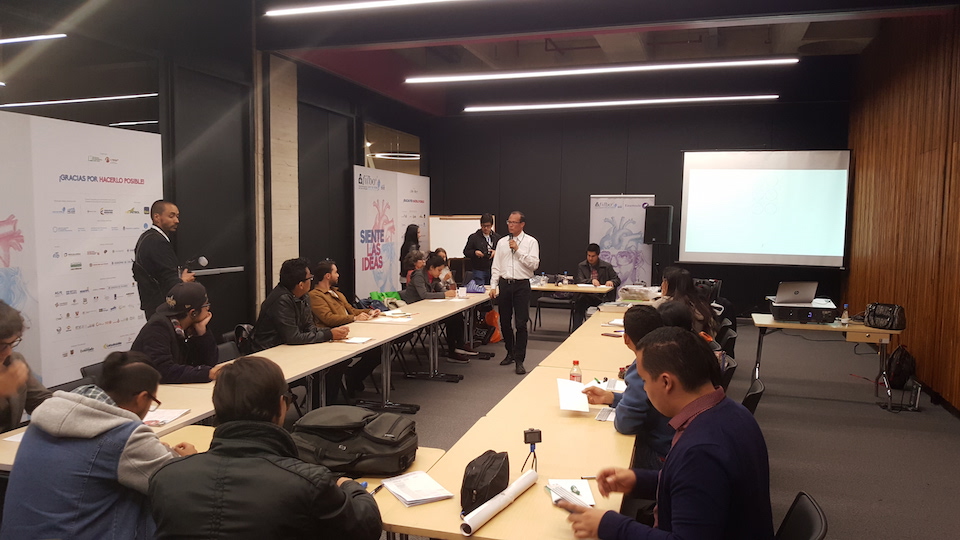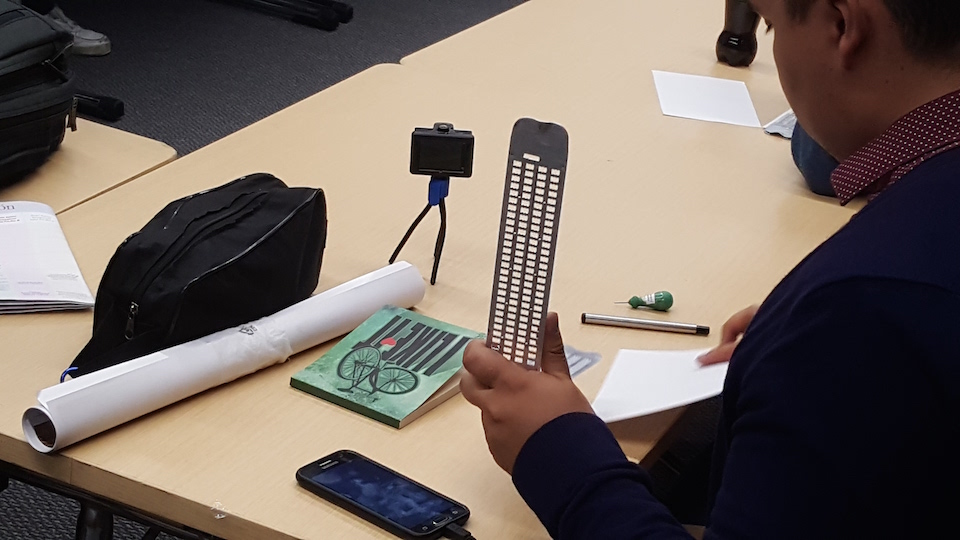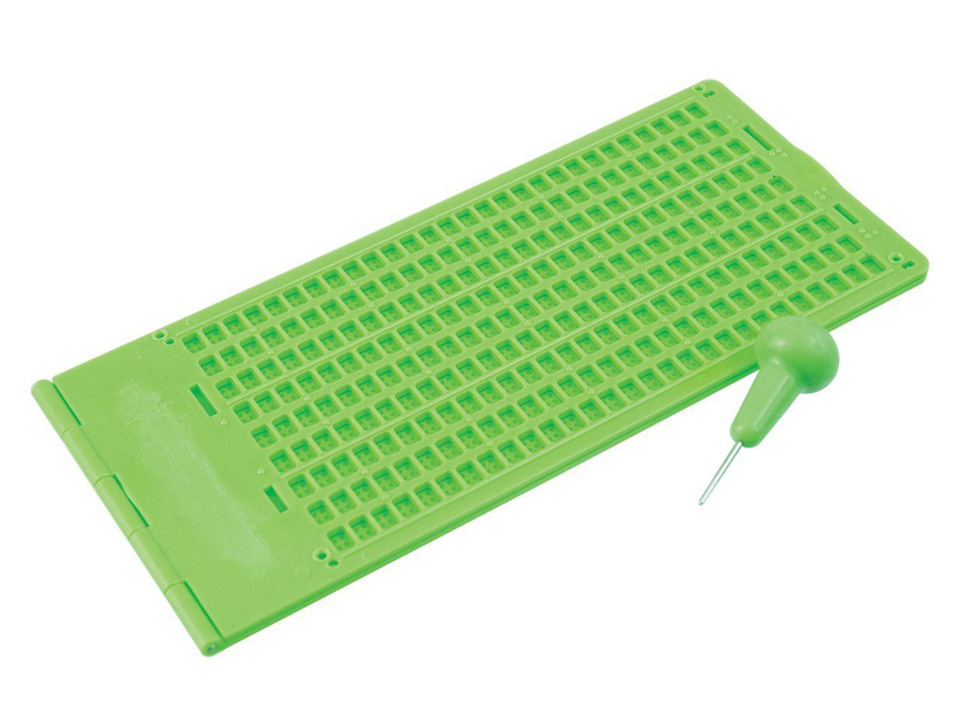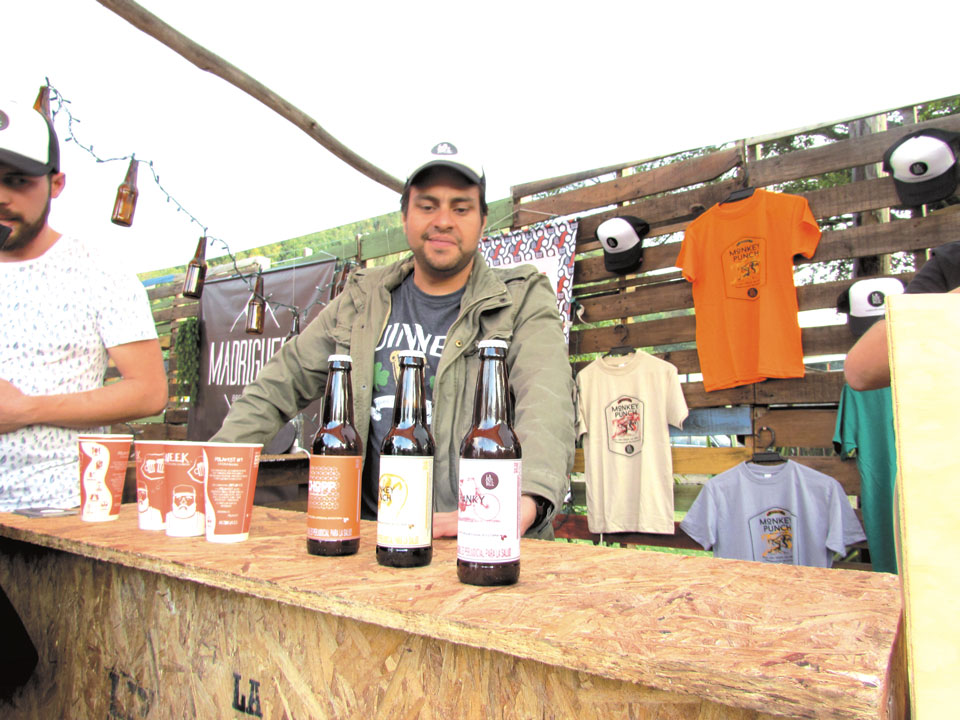
It’s just one more way to read.
As part of the ‘More ways to read’ section of FILBo, multiple workshops on reading and writing braille have been organised in the FILBo: Talleres space.
Hush descends around the table, a large square of desks arranged with a space in the centre, around which sit 20 people of all ages, all looking intently to the instructor pacing within. Each person has an odd set of tools in front of them: a small perforated grid, a pointed stylus or pen, and a sheet of paper covered in little raised dots. The instructor waves his hand airily at the latest sequence of letters and dots on the large projection, and the quiet is broken by a frantic scratch of pen on paper.
You really wouldn’t expect a workshop on reading and writing braille to have an intense atmosphere, but this class does. People chat amicably to their companions, but when the work starts the focus is immediately apparent.
Related: Get the best out of FILBo2018
You may be asking yourself: but why should I be bothered? Anyone with visual impairment, or their family and friends, likely already has access to braille courses; and anyone unconnected to a visually impaired person hardly needs to learn. While that is, in the broadest sense, true of reading braille, this class simultaneously teaches you how to write in braille – and that is something that is eminently useful.
If you can write in braille, you can include the visually impaired in memos at work, or serve as a translator yourself – a fantastic thing to have on your CV. You can also translate any information for clubs or societies you are part of. Plus, it’s fun! Pushing the stylus through the grid to create a little pattern and then figuring out the meaning is very satisfying, and the teaching is quick and intuitive. Some may consider braille a dying language, superceded by technology along with everything else, but just as being able to read and write with pen and paper defines literacy for a sighted person; being able to read and write braille is still considered the definition of literacy for someone who is visually impaired. You never know when this skill might suddenly come in handy, so come along and help make the world a little more inclusive.

It’s actually weirdly satisfying.
The workshops, organised by the National Institute for the Blind, INCI, are held on April 25, April 27 and May 1. They’re free, except for the cost of entry to FILBo, and run from 6.30pm – 7.30pm in the Sala de Talleres.
Related: Read all our FILbo coverage here
But what is Braille?
Braille is named after its inventor, Louis Braille, a Frenchman who developed the coded system in 1824 after a childhood accident blinded him. Braille patterns vary from language to language, but each type uses a grid of six raised dots – two across and three deep. Depending on which dots out of these six are raised or depressed, each grid forms a letter. In more complex systems there is even room for abbreviations and personal quirks. It really is as complex as any other language.

It’s easy to get a kit and practice at home.



